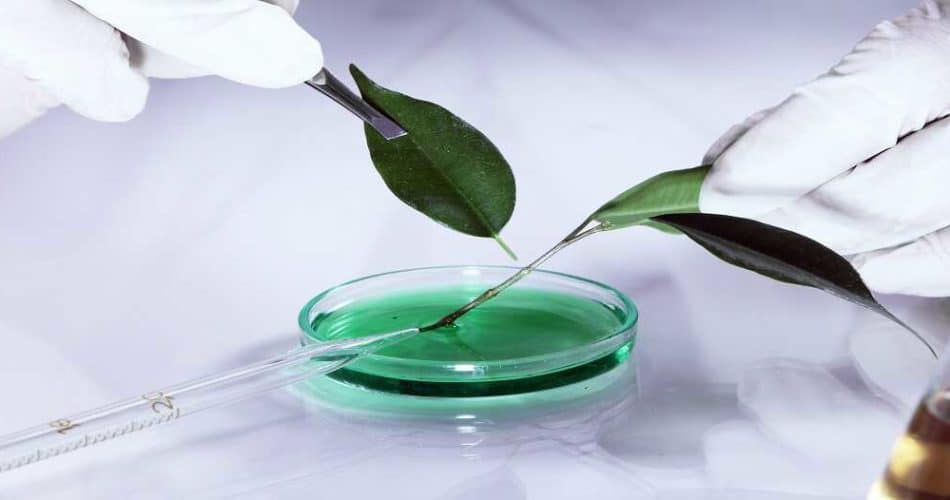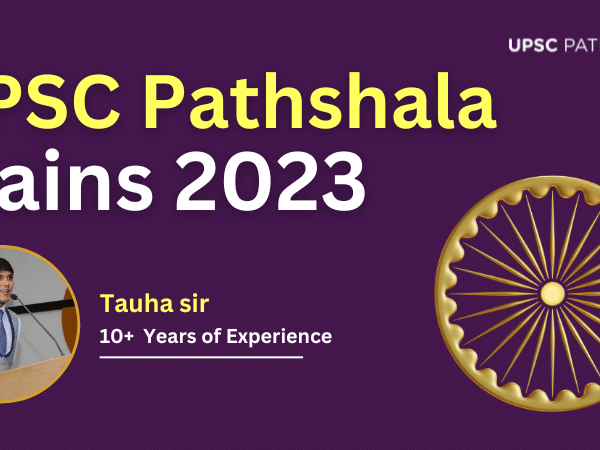One of the most incredible optional subjects for UPSC optional paper is Botany. Many candidates choose this subject to score higher and ultimately rank on the top. If you are a candidate for the UPSC exam, you should read this article to the end.
Can I prepare Botany from Internet material instead of using standard books for UPSC optional paper? Well, if this question is roaming in your head, here is the appropriate answer along with several tips to score higher in the exam.
The Internet is flooded with multiple items for each subject knowledge along with the Botany notes and concepts. You must find the most suitable platform for your studies and preparation. Let’s get the information about the subject and its strategies.
Also Read: How Many Services are There in UPSC? How to Prepare for the UPSC Services?
Can I Prepare Botany from Internet-Material? Or Standard Books for UPSC Optional Paper are Required?
Yes, you can prepare Botany from the internet material. The internet has many platforms that offer precise facts and information about the topics related to the paper. Everyone should focus on who should opt for Botany? The students who find the subject or relevant areas concrete and interesting along with the aspirants who have studied Biology or Botany in school or college choose this subject to perform excellently in the exam.
They give their efforts because they have some knowledge about this subject and can opt for this optional. The candidates who have an interest in this subject even if they have not taken Botany at the time of their graduation can also choose this subject as their optional.
Let’s know the advantages of choosing this subject for the UPSC preparation.
Benefits of Botany
Let’s do the Botany optional preparation after acknowledging the advantages of the subject. It can be an extremely scoring portion as it’s a science subject with concrete and precise questions. This subject will prove to be highly significant once you will get all the concepts perfectly. So, don’t miss out on the list of benefits written here and start doing UPSC preparation for the subject.
#. The questions asked in the paper are fundamental and direct.
#. This subject gives high-scoring benefits as there is no role in the interpretation of the examiners. The questions are straightforward.
#. Almost all the parts of the paper are static.
#. The candidates only need to have their basics and concepts clear to write perfect and decent answers.
#. You can secure high scores by making diagrams in the answer sheet (in the questions where it’s required) in this subject.
Also Read: Botany Syllabus for UPSC IAS Exam: Check Out the Knowledge and Facts about the Optional Subject
Optional Subject for UPSC
Do you want to upgrade your chances of cracking the UPSC exam in this attempt? If yes, you must go through the question papers of this optional subject. These question papers of the optional subject will give you an idea of the pattern of questions, marks, the format of the paper, and everything related to it that will boost your knowledge and make you step closer towards success in the examination. So, go down and get the Botany previous year’s papers.
Botany Optional Paper 2020
Botany Optional 2019
Botany Optional 2018
Botany Optional 2017
Botany Optional 2016
Botany Optional 2015
Botany Optional 2014
Botany Optional 2013
Botany Optional 2012
Botany Optional 2011
Botany Optional 2010
Botany Syllabus for 2022
Botany Paper-I
#. 1. Microbiology and Plant Pathology
Viruses, bacteria, and plasmids structure and reproduction. A general account of infection, Phyto Immunology. Applications of microbiology in agriculture, industry, medicine, and pollution control in air, soil, and water. Important plant diseases are caused by viruses, bacteria, mycoplasma, fungi, and nematodes. Mode of infection and dissemination. Molecular basis of infection and disease resistance/defense. Physiology of parasitism and control measures. Fungal toxins.
#2. Cryptogams
Algae, Fungi, Bryophytes, Pteridophytes-structure, and reproduction from an evolutionary viewpoint. Distribution of Cryptogams in India and their economic potential.
#3. Phanerogams
Gymnosperms: Concept of Progymnosperms. Classification and distribution of Gymnosperms. Salient features of Cycadales, Coniferrals, and Gnetales, their structures, and reproduction. General account of Cycadofilicales, Bennettitales and Cordaitales. Angiosperms: Systematics, anatomy, embryology, palynology, and phylogeny.
A comparative account of various systems of Angiosperm Classification. Study of angiosperm families–Magnoliaceae, Ranunculaceae, Brassicaceae (Cruciferae), Rosaceae, Leguminosae, Euphorbiaceae, Malvaceae, Dipterocarpaceae, Apiaceae (Umbelliferae), Asclepiadaceae, Verbenaceae, Solanaceae, Rubiaceae, Cucurbitaceae, Asteraceae (Composite), Poaceae (Gramineae), Arecaceae (Palmae), Liliaceae, Musaceae, Orchidaceae.
Stomata and their types. Anomalous secondary growth, Anatomy of C 3 and C4 plants. Development of male and female gametophytes, pollination, fertilization. Endosperm–its development and function. Patterns of embryo development. Polyembryony, apomixis, Applications of palynology.
#4. Plant Utility and Exploitation
Origin of cultivated plants, Vavilov’s centers of origin. Plants as sources for food, fodder, fibers, spices, beverages, drugs, narcotics, insecticides, timber, gums, resins, and dyes. Latex, cellulose Starch and their products. Perfumery. Importance of Ethnobotany in the Indian context. Energy plantation. Botanical Gardens and Herbaria.
#5. Morphogenesis
Totipotency, polarity, symmetry, and differentiation. Cell, tissue, organ, and protoplast culture. Somatic hybrids and Cybrids.
Also Read: Is Botany a Good Optional for IAS and IFOS? Is it a Good Choice for Science Students?
Botany Paper-II
#1. Cell Biology
Techniques of Cell Biology. Prokaryotic and eukaryotic cells -structural and ultrastructural details. Structure and function of extracellular matrix or ECM (cell wall) and membranes-cell adhesion, membrane transport, and vesicular transport.
Structure and function of cell organelles (chloroplasts, mitochondria, ER, ribosomes, endosomes, lysosomes, peroxisomes, hydrogenosomes). Nucleus, nucleolus, nuclear pore complex. Chromatin and nucleosome. Cell signaling and cell receptors.
Signal transduction (G-1 proteins, etc.). Mitosis and meiosis; molecular basis of the cell cycle. Numerical and structural variations in chromosomes and their significance. Study of polytene, lampbrush, and B-chromosomes–structure, behavior, and significance.
#2. Genetics, Molecular Biology, and Evolution
Development of genetics, and gene versus allele concepts (Pseudoalleles). Quantitative genetics and multiple factors. Linkage and crossing over–methods of gene mapping including molecular maps (the idea of mapping function).
Sex chromosomes and sex-linked inheritance, sex determination, and molecular basis of sex differentiation. Mutation (biochemical and molecular basis). Cytoplasmic inheritance and cytoplasmic genes (including genetics of male sterility).
Prions and prion hypothesis. Structure and synthesis of nucleic acids and proteins. Genetic code and regulation of gene expression. Multigene families. Organic evolution-evidences, mechanism, and theories. Role of RNA in origin and evolution.
#3. Plant Breeding, Biotechnology and Biostatistics
Methods of plant breeding — introduction, selection, and hybridization (pedigree, backcross, mass selection, bulk method). Male sterility and heterosis breeding. Use of apomixis in plant breeding. Micropropagation and genetic engineering–methods of transfer of genes and transgenic crops; development and use of molecular markers in plant breeding.
Standard deviation and coefficient of variation (CV). Tests of significance (Z-test, t-test, and chi-square tests). Probability and distributions (normal, binomial, and Poisson distributions). Correlation and regression.
#4. Physiology and Biochemistry
Water relations, Mineral nutrition, and ion transport, mineral deficiencies. Photosynthesis–photochemical reactions, photophosphorylation, and carbon pathways including C pathway (photorespiration), C, C, and CAM pathways.
Respiration (anaerobic and aerobic, including fermentation-electron transport chain and oxidative phosphorylation. Chemiosmotic theory and ATP synthesis. Nitrogen fixation and nitrogen metabolism. Enzymes, coenzymes, energy transfer, and energy conservation. Importance of secondary metabolites.
Pigments as photoreceptors (plastidial pigments and phytochrome). Photoperiodism and flowering, vernalization, senescence. Growth substances-their chemical nature, role, and applications in agri-horticulture, growth indices, growth movements. Stress physiology (heat, water, salinity, metal). Fruit and seed physiology. Dormancy, storage, and germination of seed. Fruit ripening — its molecular basis and manipulation.
#5. Ecology and Plant Geography
Ecological factors. Concepts and dynamics of the community. Plant succession. Concepts of the biosphere. Ecosystems and their conservation. Pollution and its control (including phytoremediation).
#6. Forest types of India
Afforestation, deforestation and social forestry. Endangered plants, endemism, and Red Data Books.Biodiversity. Convention of Biological Diversity, Sovereign Rights, and Intellectual Property Rights. Biogeochemical cycles. Global warming.
Botany Optional Preparation
Do you want to know the strategies to ace the botany optional exam? Have you checked the above-given question papers of different years? You should go through the papers to understand the level and pattern of questions.
The online Botany notes give you the strength to answer the questions correctly in the exam. Once you will understand the questions, these strategies will help you tremendously. Below are a few strategies to excel in the first and second papers of this optional.
Paper 1
#. You should emphasize the diagrams in this paper.
#. In Phanerogams the main areas are:
Gymnosperms:- You should concentrate on the types of fossils in this area.
Angiosperms:- The candidates must prepare formulas and floral diagrams in this portion.
Embryology:- In this topic, you should not ignore diagrams as these are very significant.
#. Focus on the Indian species examples as you have to write those for the species part.
# The Microbiology section is extremely important for the short notes of 200 words.
Also Read: How to Prepare for Botany Optional? The Best Optional Subject for the UPSC Exam
Paper 2
Some techniques to carry out in paper 2 of botany are here.
#. The candidates should write answers in a way that gives importance to applications in human welfare and agriculture.
#. The candidates are required to emphasize the molecular aspect which is under cell biology.
#. Biochemical physiology is extremely important in the biochemistry and physiology portions. You are required to cover the developmental physiology aspects in the topics such as fruit ripening, flowering, and seed germination. The physiology and hormones are essential to be covered.
#. One of the most important areas where you can score the most is molecular biology, genetics, and evolution. So, you should work on it perfectly.
Also Read: UPSC Exam Subject List: The Ultimate Preparation Strategy for the Civil Service Examination
Conclusion
This article must have given you the ways to prepare for this dynamic subject. Botany optional preparation is extremely important because the syllabus of this subject is a bit challenging. This subject is generally chosen by science students or those who have an interest in its topics and concepts.
Botany deals with plants and environmental knowledge. If you think that you need guidance over particular topics for this optional subject or if you want to learn to move on to the right track by the professionals, you should visit the UPSC Pathshala website. Many articles on different optional subjects and preparation strategies are available at the site.
You can share your methodology or can ask anything in the comment below. The experts are always there to help you in each sphere and time. You can be composed for the exam by perfect mentorship and content. So, visit the right platform to develop your intellect and mindfulness for the exam.







